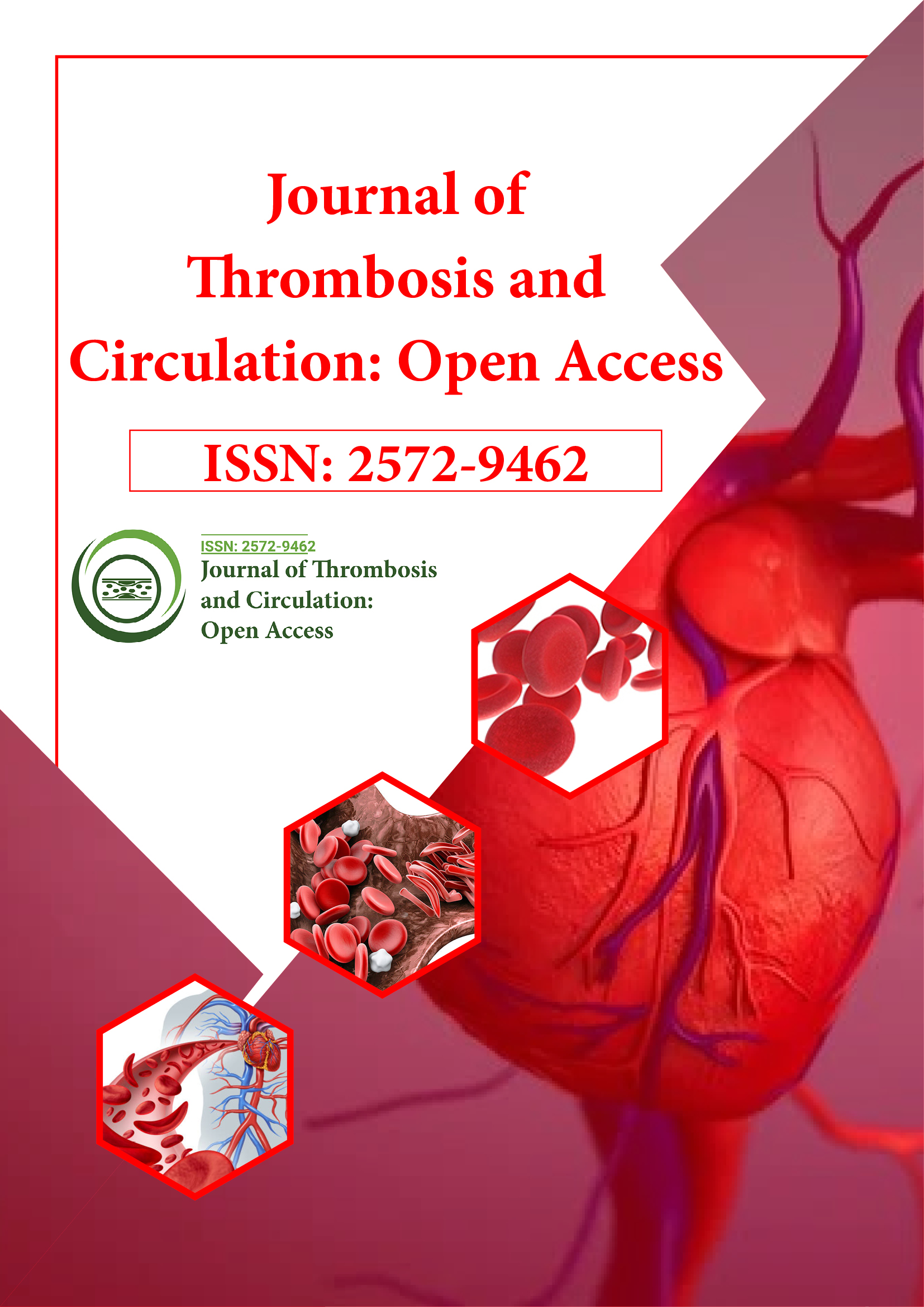Indexed In
- RefSeek
- Hamdard University
- EBSCO A-Z
- Publons
- Google Scholar
Useful Links
Share This Page
Journal Flyer

Open Access Journals
- Agri and Aquaculture
- Biochemistry
- Bioinformatics & Systems Biology
- Business & Management
- Chemistry
- Clinical Sciences
- Engineering
- Food & Nutrition
- General Science
- Genetics & Molecular Biology
- Immunology & Microbiology
- Medical Sciences
- Neuroscience & Psychology
- Nursing & Health Care
- Pharmaceutical Sciences
Perspective - (2024) Volume 10, Issue 4
Challenges of Managing Renal Vein Thrombosis in Kidney Trauma Patients
Andreas Markou*Received: 29-Nov-2024, Manuscript No. JTCOA-24-28430; Editor assigned: 02-Dec-2024, Pre QC No. JTCOA-24-28430 (PQ); Reviewed: 16-Dec-2024, QC No. JTCOA-24-28430; Revised: 23-Dec-2024, Manuscript No. JTCOA-24-28430 (R); Published: 30-Dec-2024, DOI: 10.35248/2572-9462.24.10.289
Description
Renal Vein Thrombosis (RVT) is a rare but serious complication that can arise during the management of kidney trauma, particularly in patients undergoing non-operative treatment. The advent of conservative management strategies for kidney injuries has led to a significant reduction in the need for surgical intervention. However, while non-operative treatment offers advantages, such as preservation of renal function and avoidance of the risks associated with surgery, it also introduces the potential for complications, including RVT. As the understanding of renal vein thrombosis in the context of kidney trauma continues to evolve, it is essential to examine the mechanisms, risk factors, clinical implications and strategies for managing this challenging condition.
Non-operative treatment of kidney trauma, primarily involving bed rest, close monitoring and sometimes the use of interventional radiology techniques such as embolization or stenting, has become the standard of care for most cases of blunt renal injury. This approach has shown success in preserving renal function and reducing morbidity, particularly in cases of low-grade injuries. However, higher-grade kidney injuries or those complicated by vascular disruption can predispose patients to a range of vascular complications, including RVT.
The pathophysiology of RVT in kidney trauma is multifactorial. Traumatic injury to the renal parenchyma or renal vessels, including the renal vein, can lead to endothelial injury, stasis and hypercoagulability-all of which are contributing factors to thrombosis. In non-operative treatment settings, the lack of surgical intervention and prolonged bed rest can further exacerbate these factors, creating an environment conducive to thrombus formation. Additionally, the hemodynamic instability that often accompanies severe renal trauma can contribute to renal venous stasis, increasing the likelihood of thrombosis.
The clinical presentation of RVT can vary, with some patients remaining asymptomatic while others experience symptoms such as flank pain, hematuria, or even sudden deterioration in renal function. Because RVT is not a typical complication routinely anticipated in non-operative treatment protocols, its diagnosis can be delayed, especially in the absence of overt symptoms. Imaging modalities such as contrast-enhanced CT scans, Doppler ultrasonography and MRI can be used to confirm the diagnosis. Early detection of RVT is important, as it may lead to significant renal impairment or even loss of renal function if left untreated.
While non-operative management is often sufficient for the treatment of kidney trauma, it is important to recognize the potential for RVT and monitor patients accordingly. The identification of high-risk patients, such as those with high-grade renal injuries or those who experience significant vascular disruption, is key to preventing complications. Preventive measures, such as the early use of anticoagulation therapy or the implementation of mechanical interventions like sequential compression devices, may help reduce the risk of thrombosis. Additionally, vigilant monitoring of renal function through regular blood tests and imaging can help identify RVT at an early stage, allowing for timely intervention.
Treatment of RVT in the setting of kidney trauma is complex and depends on the severity of the thrombosis and the extent of renal impairment. In some cases, anticoagulation therapy with heparin or low-molecular-weight heparin can be initiated to prevent further thrombus formation. In more severe cases, when renal function is at risk or the thrombosis is extending, more aggressive treatments, including thrombolysis or surgical thrombectomy, may be required. However, these interventions carry their own risks and the decision to proceed must be carefully balanced against the potential benefits.
The management of renal vein thrombosis in the setting of nonoperative kidney trauma underscores the importance of a multidisciplinary approach. Urologists, nephrologists, interventional radiologists and intensivists must collaborate closely to ensure optimal patient outcomes. Early recognition of at-risk patients, appropriate monitoring for signs of RVT and prompt intervention can help mitigate the adverse effects of this serious complication.
In conclusion, while non-operative management has revolutionized the treatment of kidney trauma, it is not without its challenges. Renal vein thrombosis represents a significant complication in some patients, potentially leading to irreversible renal damage if not properly managed. The pathophysiology of RVT in the context of kidney trauma is complex and multifactorial, necessitating careful monitoring and early intervention. As our understanding of the condition grows, it will be essential to develop better preventive and therapeutic strategies to mitigate the risks of RVT in patients undergoing non-operative treatment for kidney injuries. Ultimately, a comprehensive and collaborative approach to patient care will ensure the best possible outcomes and preserve renal function for these vulnerable patients.
Citation: Markou A (2024). Challenges of Managing Renal Vein Thrombosis in Kidney Trauma Patients. J Thrombo Cir. 10:289.
Copyright: © 2024 Markou A. This is an open-access article distributed under the terms of the Creative Commons Attribution License, which permits unrestricted use, distribution, and reproduction in any medium, provided the original author and source are credited.
